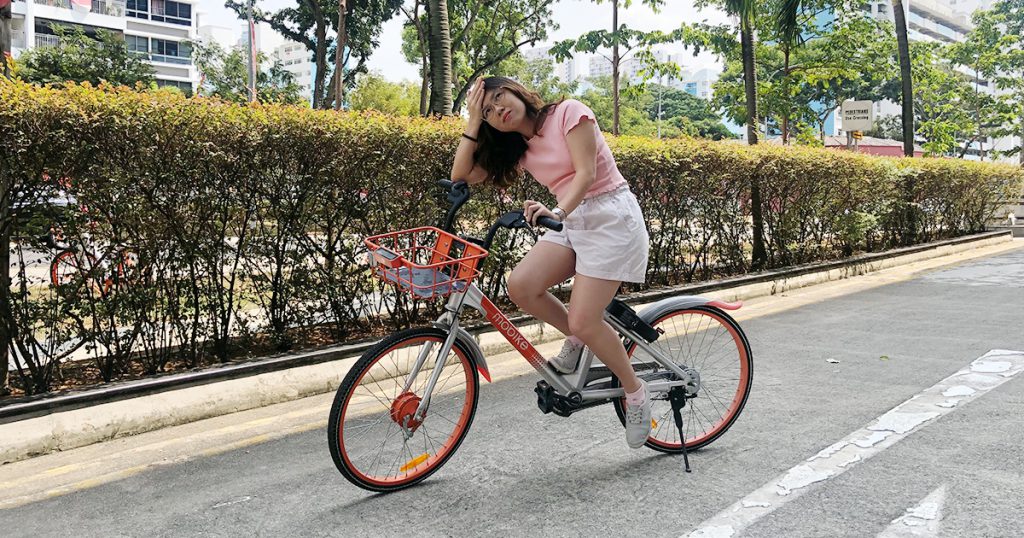Remember when we got along fine using the MRT, buses, taxis, and our own two feet as the usual transport methods besides driving to get around Singapore?
It wasn’t a time too long ago, about six or seven years in fact, just before ride-hailing came to our shores in the form of Uber in early 2013, and Grab arrived in hot pursuit the following year.
Since we were introduced to the idea, our appetite for convenience has grown to become insatiable.
Now we’ve accepted them as less of a new innovation and more of a mainstay. Ride-hailing services pervade everyday life, a large base of users rely heavily on them, and the companies that provide them are revered as tech giants.
A few years down the road, we then had bike-sharing firms pouring in as well, unfortunately in numbers too rife to manage.
As soon as the bike-sharing pioneers like oBike and ofo started fizzling out, we already moved on to their next successor: e-scooter sharing.
The transport options that make up our commute now are much different from seven years ago. But not all of them receive the same levels of public acceptance eventually leading to success.
Virtually all these companies in the fray across ride-hailing, bike-sharing and e-scooter sharing are claiming to bring us “urban mobility” or “urban transport” solutions.
Beyond the buzzwords they throw around, the question is: Are they really tackling a problem that needs solving?
Why Ride-Hailing‘s Got It Right

For an easy start, we don’t need to make much of a case for ride-hailing because Singaporeans are generally quite grateful for its existence.
The success of ride-hailing can mostly be attributed to how it created a real disruption in the taxi industry, which was never done before at the time.
Commuters who were unsatisfied with high metered fares and the struggle to flag down taxis in the hot sun, sometimes waiting even longer to get a cab than the actual duration of the journey itself, found many of their frustrations answered.
Ride-hailing apps helped by pairing people with the closest available driver, matching the supply to demand more effectively than street-hail taxis. They also introduced new pricing models that are more often than not cheaper than metered fares.
With the employment flexibility, it also turned out to be a positive boost to workers in the gig economy.
Other than a few typical complaints (high prices during surge timings, driver/passenger cancellations), ride-hailing hasn’t hit any significant road bumps.
Even when people were angry that Grab held a monopoly post-merger and wasn’t pushing out promotional prices as much as before, they still used it anyway.
Regulations and licensing to govern ride-hailing firms have only started coming into play in 2019, but their absence hasn’t given us much trouble with ride-hail operators in Singapore for the past six years.
Is There A Need For Shared Bikes And E-Scooters, Though?

Unlike booking cars to travel further, bicycle and e-scooter sharing are first- and last-mile transport solutions. For example, they help people make the short trip from home to the nearest MRT station and vice versa.
Considering this, their usage is already much smaller in scale than most modes of transport.
Pledging to help modern cities reach peak accessibility, these services often position themselves as the final piece of the jigsaw puzzle needed to complete a robust transport system.
But it’s unlikely that people really perceive them to be as crucial as that.
Instead, some Singaporeans we talked to think “bike-sharing created a new need when it arrived, rather than addressing a need that existed in the first place”.
Others tend to agree with this because they never saw much difficulty in walking short distances or taking a short bus ride to connect them between places before bike-sharing came along.
While it may be useful in larger cities or outskirts, people find Singapore’s public transport “good enough”, with well-connected MRT stations and bus stops covering most of the ground for our travels.
That’s not to say people don’t enjoy renting shared-bikes and e-scooters, though. However, their idea of its usefulness may not be for everyday transport, but as an affordable and convenient means for “recreational cycling” like exploring a park.
On the other hand, some also note that shared bicycles are useful for students and staff in large campuses and “for blue-collar workers to travel to hard to reach places like industrial areas and dormitories”.
The availability of e-scooters also has merits in allowing people to do part-time delivery jobs for services like Foodpanda and GrabFood too.
In all, shared bikes and e-scooters are helpful for certain groups of commuters, which is decent even though they’re certainly not a daily “urban transport solution” for all across the board.
For the general user, perhaps horrors and hazards have outweighed the positives.


While we’ve had bicycles for centuries, and PMDs were already available for purchase nearly 10 years ago, the disproportionate blow-up of their popularity recently resulted in issues ranging from unpleasant to life-threatening.
Public walkways, HDB void decks and even drains became cluttered with wrongly parked and damaged bicycles, in just a short time after bike-sharing firms started operating in Singapore.
Users were once excited to experience these rides and take advantage of their low cost and convenience, but eventually they could no longer see it in the same light after misuse grew out of proportion.
The earlier firms also tried to do too much too fast, and ran into cash flow problems soon, resorting to things like keeping users’ deposits locked.
One previous bike-sharing user said ofo’s case of locking deposits and making unauthorised transactions left her with a bad taste in her mouth and made her “scared to use bike-sharing apps” even if future players do better.

As one mess is cleaned up, the next followed closely with increasing complaints of inconsiderate speeding PMD riders brought on by the sudden proliferation of the devices (although mostly privately owned and not from sharing services).
PMDs had to be banned from roads as they were a liability for accidents, but even on public footpaths many people regularly come into contact with a rider blatantly ignoring the stipulated speed limit.
Incidents of PMD-related fires have also raised alarm, especially with one resident’s life lost in July.
Each time bike-sharing or e-scooters went wrong, the government had to step in to enforce rules to repair and prevent further damage.
For shared bikes and e-scooters to assimilate into our commuting and provide real benefits for the right people, it will take more work and good cooperation between firms and authorities.
But well, our transport system seems to have been serving us wonderfully all this while.
Featured Image Credit: Vulcan Post











